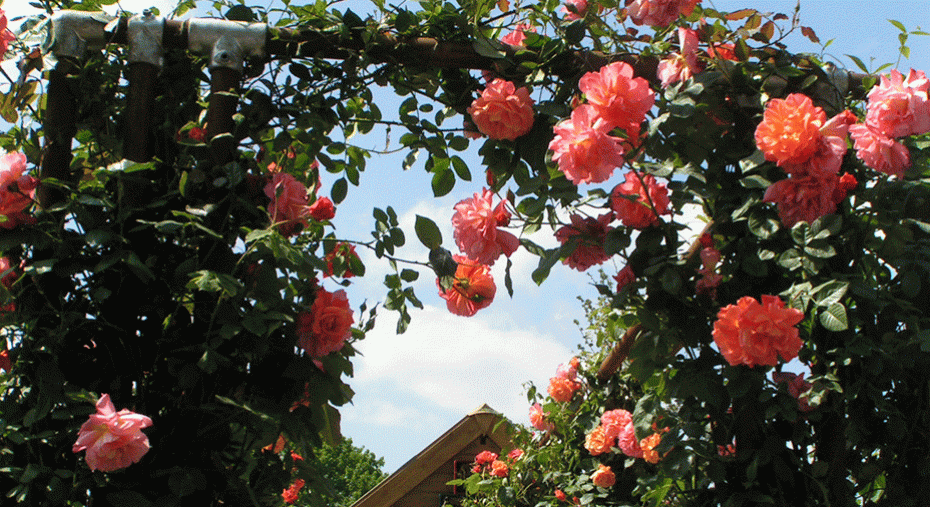Have roses blooming well into autumn
Roses are the nation’s favourite flower and with good reason, they look gorgeous, will flower into autumn and as a bonus can smell absolutely sublime. There are roses to suit every aspect in the garden; even if you don’t have a garden they can be grown successfully in containers, provided they are large enough. If you look after them over the summer, they will reward you by flowering well into autumn; with the exception of ramblers, they only flower the once.
Dead-heading
This is absolutely vital, if you leave the heads on the rose will put all its energy into making hips instead of producing more flowers. Don’t just snip off the heads take it down to the next node.
Mulch
If you didn’t do this in spring it’s not too late. Weed, feed, water then apply the mulch to a thickness of about 5cm (2”).

Image: Susan Williams-Ellis (Image courtesy of David Austin)
Feeding
Feed around the beginning of July once the first flush of flowers has finished, this will encourage another flush in late summer and autumn. Remove any debris and weed around the plant, apply the fertiliser then gently work it into the soil with a hand fork. Finally, water. The first feed of the season should have taken place late March to early April.
Watering
Make sure they are damp at all times, especially important if they are in containers, these may need watering twice a day, in the morning and again in the cool of the evening.
Pests and diseases
Prevent black spot by watering onto the soil not over the top of the plant, as this just washes the disease from the top to the bottom of the plant. If you already have the disease you may have to apply a spray but any severely diseased leaves need to be removed, also any which have dropped off onto the soil. Regularly removing any debris from the soil removes a beneficial habitat for pests and diseases to develop.
Greenfly can be removed by gently rubbing the affected are between finger and thumb. Feeding the birds is a great way of getting rid of greenfly as blue tits absolutely love them. Hoverflies also love greenflies so encourage them by planting species which they love. These are those nectar plants which are also loved by bees, so single, flat-topped flowers which are easily accessible, including; single French marigolds, heleniums, fruit blossom, Michaelmas daisies and Eupatrium.

Image: Thomas A Becket (Image courtesy of David Austin)
Air flow
Make sure the centre of the plant is not congested and has a good air flow, a dense rose with poor airflow is susceptible to mildew. Prune in autumn and spring.


